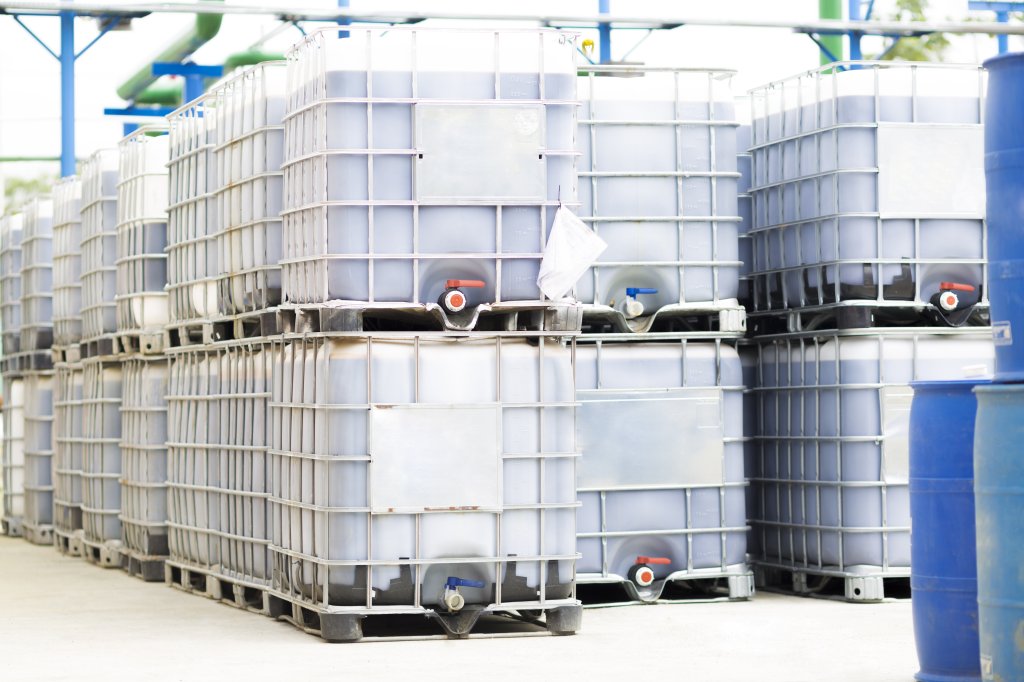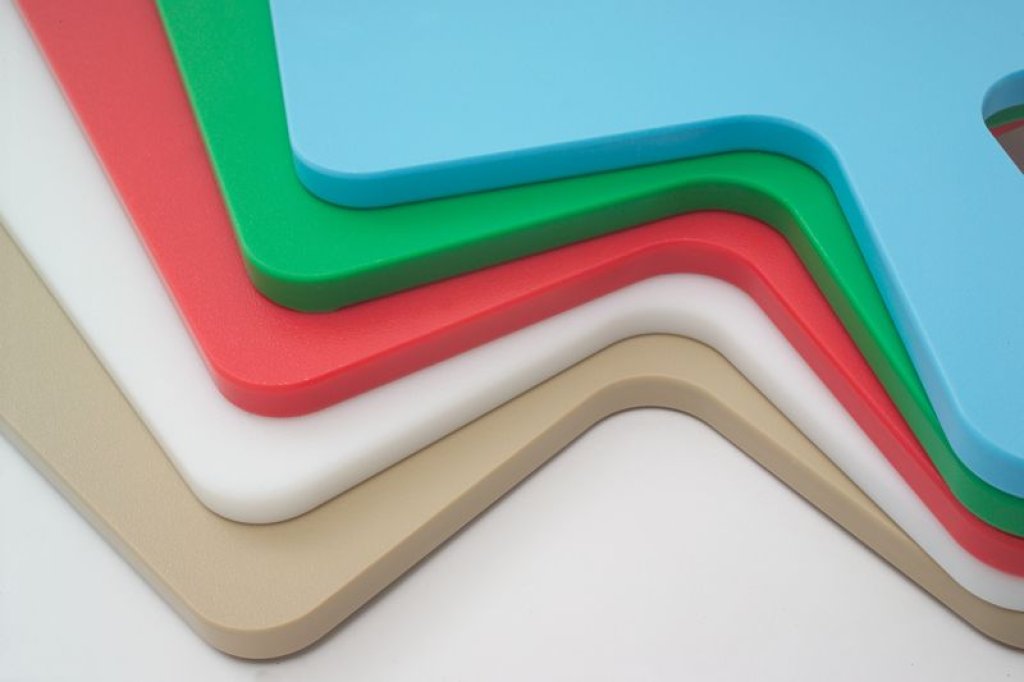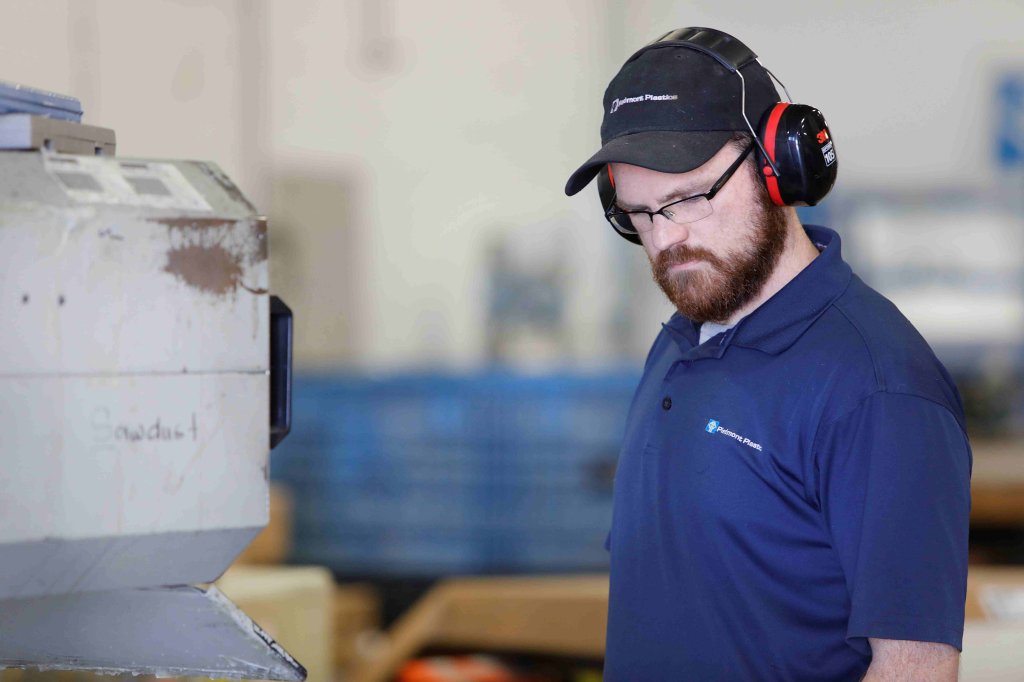What is High-Density Polyethylene (HDPE)?
High-density polyethylene (HDPE) is a highly versatile petroleum-based thermoplastic polymer and one of the most commonly used materials in manufacturing today. Its molecular structure provides an impressive strength/density ratio and is greatly valued for applications where moisture resistance and cost-effectiveness are desired.


An Expert is just around the corner.
With over 100 years of combined product knowledge and industry experience, we are confident our plastics experts can help you find a solution for your application.
HDPE appears in a broad range of manufactured items, such as cutting boards, food and beverage containers, cleaning product bottles, pipes, and shoe parts. After its creation in the 1930s, HDPE’s first use was for high-frequency radar cables employed in World War II. Today, it can be found in such complex products as 3-D printing filaments, wood-plastic composites, and components used for skeletal and facial reconstruction surgery.
It’s no wonder that HDPE is one of the most widely used types of plastic on the market. For many, its lightweight and long-lasting durability are top features, but it’s also popular due to:
Superior tensile strength
Impressive strength-to-density ratio
Overall high-impact resistance
High melting point
What Are the Pros or Benefits of HDPE?
The various favorable properties of HDPE plastic make it an ideal material for products in nearly every manufacturing niche. Some of the most notable benefits of HDPE include:
High Strength-to-Density Ratio: HDPE (high-density polyethylene) has a slightly higher density than similarly-produced LDPE (low-density polyethylene), but its linear structure exhibits substantially less branching. This means it has a higher tensile strength than LDPE and is why a 60-gram HDPE container can securely hold over a gallon of liquid.
Malleability: One of the primary advantages of HDPE plastic is its ease of molding once the proper temperature is reached. HDPE will remain stiff until it reaches extremely high temperatures because of its high melting point. Once it reaches its melting point, the material can be efficiently molded for various purposes, ranging from food and drink storage containers to corrosion-resistant pipes and playground equipment.
Resistance To Environmental Factors: While strength is significant when considering the advantages of HDPE plastic, resistance to environmental conditions like mold, mildew, and rotting is also essential. It’s an excellent material for underground plumbing to supply water since it’s long-lasting and weather-resistant. It can also endure contact with strong mineral acids and bases existing naturally in soil. HDPE is an ideal material for food and beverage containers since it can be sanitized by boiling. Finally, HDPE plastic is resistant to a wide range of chemicals, including water, solvents, acids, detergents, and cleaning solutions. HDPE containers are designed to last.
Easily Recycled: Recycling is not only a considerate and environmentally responsible action but a vital factor to consider when marketing and promoting products. HDPE plastic is easily recycled. Businesses and individuals can save money on plastic production by sending discarded or no longer needed HDPE to a recycling plant. In addition, most HDPE-made consumer item containers can be placed in any neighborhood’s weekly recycling collection.
Common Uses for HDPE Materials
HDPE plastic frequently substitutes heavier materials, helping businesses and individuals achieve sustainable and cost-effective manufacturing goals. Its great malleability, stiff strength, and corrosion resistance make it ideal for multiple applications. HDPE possesses a perfect blend of durability, cost-effectiveness, and environmental friendliness.
Because one of the most appealing aspects of HDPE plastic is its durability and weather resistance, it’s only natural that it’s also resistant to mold, mildew, rotting, and insects. It can also be easily molded into practically any shape, making it ideal for a variety of products that spend a lot of time outside, such as:
Trash and recycling bins
Compost bins
Storage containers
Plastic lumber
Fuel reservoirs
It’s a popular material for items found in kitchens indoors and outdoors. HDPE plastic is utilized for cutting boards, shelving, counters, tables, small appliances, dish soap bottles, food containers, and weather resistant cabinetry.
HDPE plastic boards can have textured surfaces to give a secure grip when handling food. It is carefully designed to be low-maintenance, safe, and long-lasting. HDPE is also FDA, NSF, and USDA certified.
Ready to Place an Order?
HDPE is available from Piedmont Plastics in a variety of colors and thicknesses. To help you get the most out of your purchase, we provide cutting services in our many locations across North America. Contact us today to get started!
Submit a Quote

